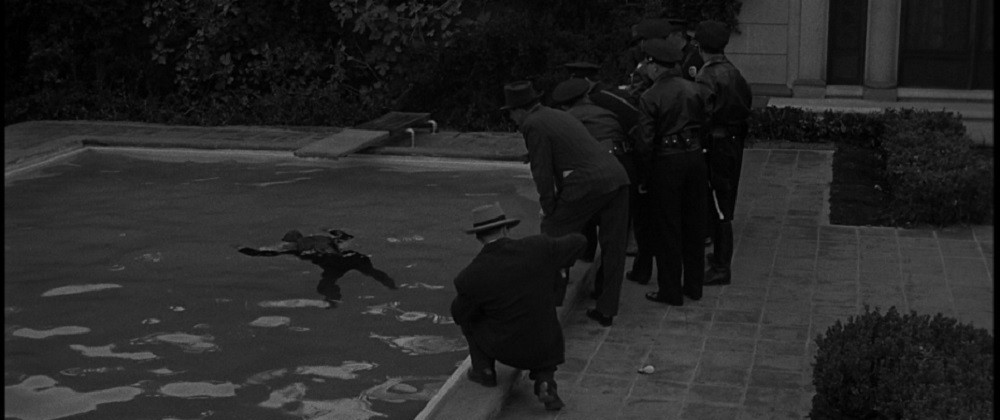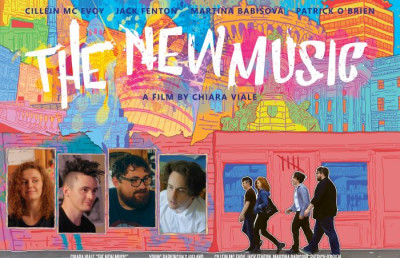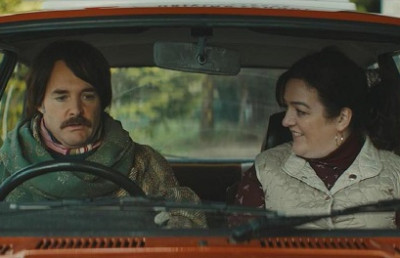Dark Mirror: The Films of Charles Brackett and Billy Wilder

Still from Sunset Boulevard, 1950 (Photo source, Paramount Pictures)
“Movies are magic.” Van Dyke Parks.
"The thing to do was suggest an idea, have it torn apart and despised. In a few days it would be apt to turn up, slightly changed, as Wilder's idea. Once I got adjusted to that way of working, our lives were much simpler."
Charles Brackett, Billy Wilder’s longtime writing partner and producer.
Applause Books on Film (Rowman/Littlefield Publishing)
As an art critic and film historian, I have long asserted that cinema was not only a legitimate part of formal art history, it was in fact the actual culmination of that art history after evolving from the roots of photography, and was, as Godard astutely pointed out, truth twenty four times a second. And subsequent to its early invention by the aptly named Lumiere Brothers, anyone who has sat in the brilliant darkness of a movie theatre and witnessed the shared spectacle of Lang’s Metropolis, 1927, or Eisenstein’s Alexander Nevsky, 1938, or Welles’ Citizen Kane, 1941, is fully cognizant of the fact that they are also witnessing paintings magically materializing in light and time. Like most inventions that it borrowed and improved upon, America quickly took the lead in this new form of storytelling, and told it with a daring aplomb.
It was called the Golden Age of Hollywood for good reason. The early evolutionary phase of the film industry, which I personally designate as roughly being from 1919 (with Von Stroheim’s Blind Husbands) to 1969 with Hopper’s Easy Rider), immediately established the stylistic devices, narrative techniques, creative content and future direction that cinema would take as both a visual art form and a commercial business enterprise. Most importantly perhaps, the paradoxical fact that cinema could indeed be both entertaining and profitable, as well as both philosophically challenging and emotionally comforting, was etched in celluloid almost from its beginnings at the turn of the century. Fine cinema is quite simply the best of both possible worlds.
There were, of course, truly great films before and after this evolutionary period, but they often demonstrate the overlooked fact that film, like every other cultural communication device, is recursive, reiterative, and clearly illustrates the spiral growth pattern where each historical element builds upon the former and expands towards the next innovation. Once it gets underway, this pattern almost inevitably leads directly from D.W. Griffith to David Lynch, in a breathtaking lineage that continues to astonish us with its apparently limitless potential for embodying human narratives and the making of shared meaning in our cultural lives.
Among the many screenwriters, producers and directors who blazed that ever expanding trail, few would have quite the lasting impact on both comedy and tragedy as impressive and influential as the iconic achievements of the volatile collaborative partnership between writer-producer Charles Brackett and writer-director Billy Wilder. They were ironically referred to as the “happiest couple in Hollywood”, despite the fact that they disliked each other intensely, and the artistic franchise or brand they forged, quite often identified literally by critics as “brackettandwilder” as if they were one person, permanently places them in the gilded age pantheon as the makers of two kinds of cinematic icon: the screwball comedy and the film noir classic. Precisely how they pulled this off so powerfully still remains a mystery. Their cinematic art, first written together, then produced by Brackett and directed by Wilder, amply highlights the paradoxical nature of their rare collaborative genius. They were mutual muses trapped in a dark mirror of their own making together, for a tumultuous time.
How they accomplished this monumental achievement, and the nature of their often painful collaboration, forms the basis of my book which might function as a critical memoir of their partnership, Double Solitaire: The Films of Charles Brackett and Billy Wilder. It’s not a memoir of the individuals themselves so much as one of their exotic bonding into a single creative and structural unit making movies together, as well as an exploration of the meaning and value of the movies they made. For now, we can all savor the strange magic of their fraught and fight-filled partnership by viewing the remarkable output that resulted from that rivalry and incendiary competition on the screens of the world. Their explosive partnership touched more hearts and minds than perhaps any other collaboration before or since. They were also possibly the first example of the independent-producer phenomenon now so prevalent in our contemporary popular cinematic culture.
Like McCartney and Lennon, another of the most influential creative partnerships in history, Charles Brackett and Billy Wilder each needed the balancing and opposite aspect of the other’s artistic and emotional temperament in order to most fruitfully produce and manage their mutual gifts. One without the other can be great, compelling, even delightful, but together they formed an almost incomprehensibly brilliant structural unit: the heads and tails of a superbly minted coin. In science, this phenomenon is called dinergy, the interaction of opposing forces to produce a significant pattern. And the method of controlling that non-prevalent balance is called governing dynamics, first discovered and named by John Nash, who is now recognized as a founder of game theory.
The fact is, one of the most famous comments about the two apparently competing theatrical genres of comedy and tragedy, that comedy is simply tragedy plus time, a remark often mis-attributed to the great Carol Burnett, was in fact uttered by Dorothy Parker to the Round Table discussions with her cohort, including Charles Brackett, at the Algonquin Room in New York roughly between 1919-1929. It was apparently later repeated by Charles Brackett to Billy Wilder in the studio office of an executive who was desperately trying to understand their original intention of making Sunset Boulevard as a comedy!
Their amazing 13 film partnership had begun rather slowly and arbitrarily between 1936-1938 with producers at Paramount Studios tossing together the barely English speaking Berlin émigré Wilder together with the worldly and senior literary figure Brackett and telling them to write Bluebeard’s Eighth Wife for the legendary Ernst Lubitsch. They quickly bristled at having other producers and directors wielding power over their hard fought words, even though they succeeded so marvelously with the great but cranky Mitchell Leisen vehicles of Midnight, Arise My Love, and Hold Back the Dawn. After concocting the wacky wordplay of Ball of Fire for Howard Hawks in 1941, they swore that they themselves would both write and produce and direct all their own future work.
Once the gentle silliness of their superb Major and the Minor launched their independence in 1942, they never looked back, creating a string of hits which explored the full spectrum of human emotions: from the dark claustrophobia of Five Graves to Cairo in 1943 and Oscar-winning paranoia of Lost Weekend in 1945, to the subtly incisive political satire of Foreign Affair in 1948.
But it was clearly the bone-chilling, dark noir nightmare of Sunset Boulevard, in 1950, a disturbing meditation on our attachment to celebrity and the manic self-absorption of Hollywood itself, for which they’re rightfully remembered as cinematic artists par excellence. It alone is visionary in its insights into the fame-addicted world we now inhabit. It also changed my life forever when I saw it on television one lonely, snowy day off from school when I was an innocent 10 year old, amazed that he was a distant relative. It still has the power to change your life today.
Looked at in its entirety, their collaborative career together can easily be compared to the 13 records created by the Beatles when it comes to their sheer impact on popular culture, as can the intimacy and almost alchemical insights of their difficult but magical partnership. When I was growing up in the extended Brackett family, I often traveled, in a metaphorical sense, with my great great grandfather’s cousin Charlie, as he was known by all. What psychological places did Brackett take me in his travels? Soley to places located in the geography of the imagination. His own rather peculiar imagination, which was shared at the hip with his creative partner and personal nemesis, Billy Wilder. The kinds of places they created together as a gifted and Academy Award winning Hollywood creative team during that glimmering age of formative cinema.
Brackett and Wilder took us to these diverse places in a unique manner: the dreams we dream alone are merely dreams, as fascinating as they might be, whereas the dreams we dream together form the very foundational structure of our culture, maybe even of our reality. They took me, and they took us all, to visit the touching Lubitch universe in Bluebeard’s Eighth Wife; to Greta Garbo’s shimmering laughter (dubbed) in Ninotchka; to Claudette Colbert’s smoldering smile in Midnight; to Gary Cooper’s otherworldly coolness in Ball of Fire; to the audacity of Charles Boyer in Hold Back The Dawn; to the racy innocence of Ginger Rogers in The Major and the Minor; to the imperious visage of Von Stroheim in Five Graves To Cairo; to the claustrophobic nightmares of Ray Milland in Lost Weekend; to the ironic sexuality of Marlene Dietrich in A Foreign Affair; to the sophisticated noir mindscape of Sunset Boulevard.
Some of their screenplays were indeed dreams, while others, such as Lost Weekend, 1945, and Sunset Boulevard, 1950, were distinctly and definitely nightmares. But not in a private nocturnal darkness, like most nightmares. Instead these were public nightmares, shared with complete strangers in the darkness of a movie theatre. Any movie theatre anywhere. And for some of us, for an art historian like me at any rate, watching great films is often indistinguishable from visiting an art gallery or museum.
The transformative experience of being transported out of your body and into another world, a celluloid copy of our world perhaps but also somehow uniquely exotic in its originality, was a special gift they somehow shared while working in tandem. And after their “divorce”, Brackett independently took us to the emotional desperation of Clifton Webb in Titanic; to the force of nature known as Marilyn Monroe in Niagara; to the elegant charm of Deborah Kerr and Yul Brynner in The King and I; and of course we traveled to Billy’s own uniquely edgy universe with Ace in the Hole, Stalag 17, Some Like It Hot, The Seven Year Itch, and many others.
But something was lost in their parting of the ways and that was quite simply each other, the powerful force of their blended brains into that special creative machine, so similar to many other frames of reference within what I like to call the creative marriages made in hell mold. That notion is the salient factor in multiple creative collaborators who shared both a massive disaffection and a proportionate success, mostly when they were working together as a team (among them Herzog and Kinski, and Hitchcock and Herrman). The basic premise? Breaking up is hard to do.
In the early stages, this arrangement proceeded smoothly enough, with each man taking turns to lead or follow in their steps, as all the best dance teams do. But before long, the tendencies of both, Wilder to be gregarious, outgoing and demonstrative, while Brackett was reticent, retiring and genteel, rapidly came to the fore in obvious and not unexpected ways. Always willing to be interviewed by almost anybody, anytime, as if to guarantee the personal plotline that he preferred, Billy was active in promoting, not just the films they wrote together, but also himself as a progenitor, or at least the charge-leading enthusiast, a trait which would continue and increase as they shifted inevitably from writing screenplays for other producers, then writing for projects written together and produced by Brackett, to films written together, produced by Brackett and directed by Wilder.
As Anthony Slide made haste to declare on the first page of his introduction to the intimate Brackett diaries he skillfully edited :
Some might argue that no one in the film industry could have had better luck than to be professionally partnered with Billy Wilder, as was Charles Brackett. Yet for the latter it approximated a curse with an inevitable conclusion. Brackett would die, Wilder would continue on and increase in fame and popularity. Brackett’s name would sink into semi-oblivion—a screenwriter with a famous colleague—while Wilder was around to emphasize his important in the relationship and receive the fame and glory for an early career and also for almost two decades more of films after his erstwhile partner’s career had ended. If nothing else, it is revealing that the “I” which Wilder used in later years in discussing the films on which Brackett and he had worked together is equally prevalent during the years the two men were together—much to the obvious and well-recorded irritation of Brackett.
As difficult as he could often be, one of the many things that Wilder intuitively knew was the necessary number of irritants required for them function as oysters together in the making of pearls. Their output of film gems also bears out just how vividly he perceived the immediate chemical reaction occurring when he first met his future partner. The fact that they were so drastically different was simply the price that both men were willing to pay in the service of their gifts, up to a point. In 1945, at the height of their commercial success, critical awards and fame, and just before things went south, Liberty Magazine profiled them perfectly, pointing out that Mr. Brackett’s poison was Mr. Wilder’s meat.
They aptly described how Mr. Brackett was distinguished and dapper, resembling the vice-president of a small town bank, whereas Mr. Wilder resembled one of the cynical and grubby reporters from the movie The Front Page, which is precisely what he was. Further delineating their radically opposed temperaments, Brackett was a stout and staunch arch-Republican while Wilder was a dedicated left-wing Democrat. Years later, Wilder would slyly confirm the obvious to Cameron Crowe by declaring that “the only thing we ever had in common was good writing.”
But what strange bedfellows these two writers were, any way you choose to look at it, and how mysteriously potent was the alchemy that resulted from their uneasy mixing, or trying to mix, oil with water. That odd sorcery, which I’ve described as the strange magic of the game of double solitaire they played with each for about a dozen years, was a powerful but vulnerable kind of détente, on that grew to be the stuff of legend in their industry. One of the keys to their longevity as partners was the simple fact that having so little in common, they rarely if ever socialized. Wilder, correctly characterized as voluble, loud, obnoxious, cynical and jaded, had enough of a challenge coping with his mild-mannered associate during their screamfests at the office, with Miss Hernandez waiting patiently outside in her alcove, waiting for the inevitable sheets of paper ripped out of Brackett’s yellow legal pads for her to try to decipher, without having to endure him socially.
Despite the perpetually shaky foundations of their teamwork, from the moment their partnership commenced, under the frequently shifting gaze of their new directorial boss Ernst Lubitsch, it was still instantly clear that the two mercurial writers managed to craft great screenplays together, without however getting along very well or liking each other, all while still respecting the other’s strengths and tolerating any weaknesses. The Liberty profile of the pair later captured their polarities very well:
The distinguished Viennese-looking gentleman is Charles Brackett of Saratoga Springs New York. The tough New Yorkerish cherub is Billy Wilder from Vienna Austria. Brackett, a man of sartorial elegance, prefers double breasted suits in conservative designs and colours. Wilder goes around wearing a pullover without a tie, his shirt sleeves rolled up. Brackett is reserved, serene, gentle. Wilder is electric, impassioned and (outwardly) tough. Brackett loathes physical exercise and buys shoes without laces because he considers tying his laces hard labour. Wilder goes in for tennis, swimming and other trying outdoor sports. Brackett takes his sunshine in doses of vitamin B-12 plus cod liver oil: Wilder never gets enough of Hollywood’s brilliant sun.
But in front of the desk, while writing together, usually peering over each other’s hunched shoulders, even though they were like oil and water, they still somehow managed to manufacture a utopian sort of salad dressing in the script, which, when sprinkled over Lubitsch’s images and action, always made him smile. And what made him smile also made us smile, or weep, depending on what the scene required. Like many teams of double solitaire oriented writers, one had a gift for structure, Wilder, and the other one for dialogue, Brackett. Both were essential ingredients in the mix.
Like a museum exhibition, it’s a curated selection of their masterpieces made magically together I wanted to focus on in this book, and also the prescient way in which they predicted the rise of a popular culture utterly enthralled by, captivated by, and even controlled by the insular vagaries of the self-centred celebrity spotlight we all now take so much for granted that we often fail to see its grim consequences. One side effect was the ironic fact that, as pointed out by the novelist John Updike, “Celebrity is a mask that eats into the face.”
My book especially explores the caustic creative dynamics behind the creation of Sunset Boulevard, and twelve other cinematic masterpieces, in a highly combustible and competitive partnership between two visionaries. I was fascinated by the huge aesthetic and social impact of their classic films on our popular culture. In particular, their final work together deeply explored how the fascination with larger than life fame has saturated our contemporary popular culture. Sunset Boulevard was, in many ways, prophetic, over sixty years ago showing us in harrowing detail a collective pathology: the dangers of unbridled star-adulation and the utter self-absorption of current our social-media scaled global culture.
When the great Gloria Swanson issued emotional declaration about the size of our pictures, it was in answer to the wandering down-and-out writer on her doorstep, who moved inevitably then into her bedroom, and was played with spooky skill by William Holden. She, also being down but not out, plotted a return from her self-imposed exile to meet her former Director, Cecil B DeMille, while he goes about fabricating yet another of his epic extravaganzas. Her remark was later mirrored in the shock expressed by the incredulous studio guard, “Why Miss Desmond!” who was stunned to see one of the most magnificent stars of the silent age of cinema being driven on site by her imperious butler and former co-star/director, Eric Von Stroheim, scowling his perpetual disdain. Why indeed. Unfazed by any unintended slights, Swanson had purred to Holden, “I’m still big…it’s the pictures that got small!” She was right, and we all now live in the small-picture world that she so condescendingly disavowed back in 1950.
Sixty some years later, it appears that practically everybody is “Ready for my close-up….” that twisted closing line of Sunset Boulevard, and that a solipsistic narcissism has become just matter of fact, an ill-advised response to this media-saturated world of ours. A world in which reality and popular entertainment have been blurred together in a fascinating but threatening manner, not unlike Sunset Boulevard itself.
Everyone who has a love of cinema shares a similar mind tattoo applied by seeing these films, or at least everyone who enjoys films as both entertainment and art form, and that imprint can be made by any movie anytime, because movies are magic, period. But some movies and their makers are simply more magic than most others. This narrative is the twisted tale of the strange personal and professional magic shared by two of Hollywood’s most accomplished magicians. After curating a 2013 program called Strange Magic for Cinematheque of all the films written together, then eventually produced and directed by the Brackett/Wilder team, I am currently curating a follow up Cinematheque program selection slated for 2024: Double Solitaire: The Unlikely Cinema of Charles Brackett and Billy Wilder. It will showcase double-features of many of the films they went on to make separately after they broke up their fruitful but volatile partnership. Among those gems:
Ace in the Hole, Billy Wilder 1951
Titanic, Charles Brackett, 1953
Niagara, Charles Brackett, 1953
Stalag 17, Billy Wilder, 1953
Women's World, Charles Brackett, 1954
Sabrina, Billy Wilder, 1954
The King and I, Charles Brackett, 1956
The Seven Year Itch, Billy Wilder, 1955
The Gift of Love, Charles Brackett, 1958
Witness For the Prosecution, Billy Wilder, 1957
The Remarkable Mr. Pennypacker, Charles Brackett, 1959
Some Like it Hot, Billy Wilder, 1959
Ten North Frederick, Charles Brackett,1958
The Apartment, Billy Wilder, 1960
While delivering public talks and during university lectures to both film students and movie fans, I attempted to elucidate what that term Double Solitaire means, since it seemed to sum up so accurately the motivations and strategies of this talented but troubled pair of writers and artists. The term is based on a competitive version of the well-known solo card pass time of solitaire, called Klondike, in which each player plays with their own 52-card deck, each with a different backing to distinguish them.
The turn game, known as double solitaire, commences with the player having the lower card on their stack starts, and you are required to move cards around only on your own layout, and your turn ends when you are not able to make any more moves. You then turn over the top facing card on your stack and place it on your opponents discard pile, at which point their turn commences. The alternative method to taking turns is to play the game as a race, with both opponents moving simultaneously. It has long seemed to me that Brackett and Wilder made their movies by alternating who was in charge at any give time during a joint project but they also frequently raced with each other to determine who was top dog in the end. This technique, playing alone but also together, perhaps even if it was unconscious, served them effectively throughout their shared careers, and it even managed to nourish them long afterwards, once they were strictly and literally solitaire.
Maybe sometimes, to quote the great soul singer Marvin Gaye, It takes two, baby / To make a dream come true.” after all.














